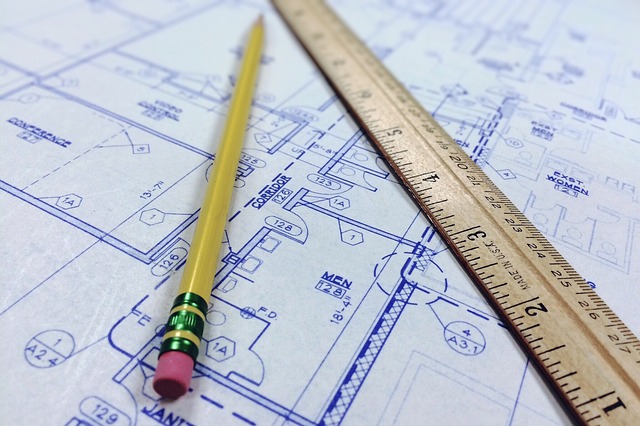Why do projects lose money, and what are the causes?
Overengineering
Precisely fitting engineering is of existential importance in mechanical and plant engineering. Precisely fitting initially sounds like the optimum technical solution. But a perfect fit also means the contractually compliant execution of the ordered service. Not too much and not too little. Time and again, we see that projects that are hailed as a worthwhile deal at the time the contract is signed turn out to be non-performing after completion. The contractor has done more than he originally planned and calculated, and the customer is unwilling to pay more than the quoted price. This is what we call overengineering.
As a result, the phone rings regularly. Either because a contractor wants to enforce the disputed claims, or a customer wants to fend off his contractor's claim. This subsequent dispute about money cannot be solved via a win-win situation. Basically, it is about damage limitation. Because damage definitely occurs simply because, in addition to the strain on the business relationship, the parties are also required to expend sometimes considerable effort either to defend or to enforce claims.
In the context of contract and claims management, it is necessary to establish the basis of the claim in an evidence-proof manner. However, this means that disruptions and deviations must be investigated right back to their source. A careful analysis of the claim, in turn, provides a deep insight into the company's structures and processes. A good claims manager who has systematically investigated a process subsequently also knows the potential for improvement in a company in order to optimize contract and claims management.
Over the years, similar criteria have repeatedly shown how unintentional and often insidious cost overruns occur. Solid conflicts are then pre-programmed with the final invoice at the latest. The goal should certainly be to avert damage to one's own company. Damage can be avoided if the causes are known so that countermeasures can be taken at an early stage. In the following articles, you will learn not only the causes, but also the approaches for avoiding negative effects.

Overengineering Cause 1: The uncertainty of dealing with contracts.
In large projects, orders are often negotiated over long periods of time until a contract is finally signed. A project team then takes on the task of implementing the order. The underlying contracts are extensive and often complex. In most cases, the contracts are not prepared in a way that is comprehensible to technicians. But how are employees supposed to fulfill a contract if they don't understand it? In addition to subjective contract interpretations, people often like to fall back on similar projects that have been realized, whereby the specifics of the current contract are only rudimentarily taken into account. But contract management during project execution is also an important factor. Three factors can be found in almost all problematic projects:
- Claims are simply not recognized.
- People rely on verbal promises or the goodwill of the other party.
- Claims are not filed because the formal effort is very high.
- Claims are not filed because it might upset the good customer.
Unfortunately, it is the rule, not the exception, that such promises are remembered only by the party making the claim. If the project is not completed on time, verbal promises count for nothing. Unfortunately, at that moment, the claimant lacks the arguments and evidence to defend the purchaser's claim.
Approach 1: Recognize claims and master procedures.
Approach 2: Coaching & support by stand-by contract managers.
Approach 3: The right contract strategy
Approach 4: The contract analysis before signing
Approach 5: The right contract strategy

Overengineering Cause 2: Unequal negotiation skills
Over the years, similar criteria have repeatedly shown how unintentional and often insidious cost overruns occur. Solid conflicts are then pre-programmed with the final invoice at the latest. The goal should certainly be to avert damage to one's own company. Damage can be avoided if the causes are known so that countermeasures can be taken at an early stage. In the following articles, you will learn not only the 5 main causes, but also the approaches to avoiding negative effects.
At the end of each project, there are often usually smaller remaining items before the contract is completely fulfilled. Now it is possible to agree on working these off or compensating for them. After tough negotiations on a power plant project, an agreement was reached with the customer to exchange the last open items for the delivery of a color plotter. Back at the head office, the responsible department was instructed to procure such a device. The surprise was complete when an order for €15,000 was then submitted for approval. Costs of around €2,000 had been expected. The inquiry then resulted in the following answer:
"The customer is known as a strong negotiator. If we had offered the small plotter first, the customer would argue until he finally got the big plotter."
The employee was convinced that he even saved the company money. If you deliver the best right away, there are no time-consuming discussions. His experience in the past had been that his customers would argue with him until they finally got what they wanted. So by delivering the maximum plotter from the start, he saved the time spent negotiating. A plotter was then offered for 1,500, - €, which the customer accepted without complaint.
This example shows a basic dilemma of most technicians and engineers. In commercial negotiations, they enter unfamiliar territory. This uncertainty is then exploited by experienced negotiators, which then leads to the experience that negotiations are not worthwhile. Lack of negotiation training and the associated experience that the other side often wins is formative here. The commercial success of a project depends to a large extent on the many employees achieving an optimal negotiation outcome for the company in the renegotiations with the customer or supplier. In many cases, this is primarily a matter of pushing through technical solutions. The larger the project, the more extensive the consequences of supposedly small concessions. Many companies expect their commercial staff to be the main negotiators. On the other hand, greater negotiating skills on the part of technical staff lead to an above-average improvement in the cost situation. Based on the knowledge of how to understand the contract, equipped with the fundamental tools of negotiation, only what is agreed in the contract will be delivered in the end.
Approach 6: Distinguish between the commercial and the technical solution.
Approach 7: Negotiation assessment
Approach 8: Negotiation according to the PRO:Claim® concept

Overengineering Cause 3: Customer is king
Very often, an analysis of cost overruns reveals that significantly more has been delivered than the contract actually requires. The response of the responsible technicians and engineers is often:
"What should I do? The customer asked for this in the design meetings and now they don't want to pay for it!"
Of course, in most contracts, the customer has the right to order additional services. But before any change in services is made, there must be mutual agreement on the scope and the additional costs. The national differences in handling are interesting here. The English engineer has few qualms about saying a loud, clear "no" to his customer. A saying among project managers picks up on this:
Anyone who signs a contract in England receives exactly what is written in the contract. If it then still works, he has been incredibly lucky.
The German specialist, on the other hand, does his best to ensure that the project is developed to the customer's complete satisfaction. The technical requirement is in the foreground. With the delivery time breathing down their necks, implementation is then often started before the commercial implications are agreed. "One" will somehow agree on the additional costs. The disappointment is then great when the customer rejects the additional costs in the follow-up discussions. Unfortunately, customer satisfaction does the project little good if it pays for all those extras. Costs run away and the project suffers hardship.
Approach 9: Defined change management processes
Only simple, standardized and transparent change processes can provide a remedy. Employees need manageable, standardized action plans that can basically be applied to all projects. With professional change management, conflict-prone additional customer demands can be avoided. The basis is precise knowledge of one's own baseline, i.e., the minimum performance required to fulfill the contract.

Overeingineering Cause 4: The technician's shame in asking for money
In connection with the enforcement of additional claims, it can be seen time and again that many technicians have a major problem presenting the customer with a monetary additional claim. The discussion about money is exhausting, often very emotional and not infrequently accompanied by threats. Customers regularly exert pressure to do this, for example by stating that without the requested change, approval of the design documents will not be granted. The threat that the contractor will no longer be considered for future awards if he demands compensation for additional work is also a frequent argument. This fear even regularly leads to anticipatory obedience in the sales department, without the customer even having to threaten anything. Technical departments are thus very often under pressure not only from outside, but also from their own team.
Studies have shown that this pressure, especially in connection with a demand for money, leads to avoidance strategies being developed. Resources are then used to develop arguments as to why the customer is entitled to the additional service and not why the customer should pay for it.
Approach 10: Workflows, with a separation of the commercial and technical solution.
Contract Tools GmbH has developed a successful system for resolving such conflicts by using defined workflows to separate commercial and technical changes. The advantage is that a commercial agreement often takes longer than the technical solution. Through a defined procedure, the technical implementation can take place promptly without losing claims.

Overengineering Cause 5: The strict corporate governance
Many of the causes of additional costs are to be found in processes and the competence of employees. However, the corporate culture practiced by the management also plays a more than important role when it comes to the competitiveness of a company. The following report is not a theoretical explanation, but a case that actually happened.
A company in the large-scale plant engineering sector filled a new position on the board of directors. The new chairman wanted to set an example right from the start and make it clear that he would not tolerate any mistakes. In the very first week, therefore, an engineer was internally pilloried for a mistake and dismissed. He was accused of designing a control valve that was too small. As a result, time-consuming rework was required on the construction site. In the time that followed, this board member also made sure that various employees could look at the company from the outside (as he liked to put it) if, in his view, they were to blame for a mistake.
A dramatic effect of this corporate culture turned out to be 20 months later. When a new industrial plant worth €250 million was commissioned, it produced 25% more output instead of the 100% sold. An analysis of how this could have happened was inconclusive. Only confidential discussions with employees involved then revealed the cause. For fear of being punished by the chairman, an in-house safety margin had been established. Too small dimensions endanger the workplace! Larger dimensioned, avoids the internal risk of job loss!
The problem, however, was that the plants could no longer be offered competitively due to the oversizing. Incidentally, the company has since been taken over by the competition.
Approach 11: Failure-tolerant management
Fault-tolerant companies that actually live the motto "learn from mistakes" show significantly better overall results in the long term than companies with a punishment policy. However, being able to talk openly about mistakes is a real challenge that should be lived throughout the entire company, from the board of directors to the smallest cog.
Especially when it comes to analyzing a claim, deviations are very often identified that could be blamed on an employee. As a result, intolerantly managed companies repeatedly experience that errors are then concealed and manipulated, so that an analysis of the causes becomes at least more difficult, if not impossible. Learning from mistakes and avoiding them in future projects is one of the most successful strategies, not only to secure the loyalty of employees, but also to gain an edge over the competition.
